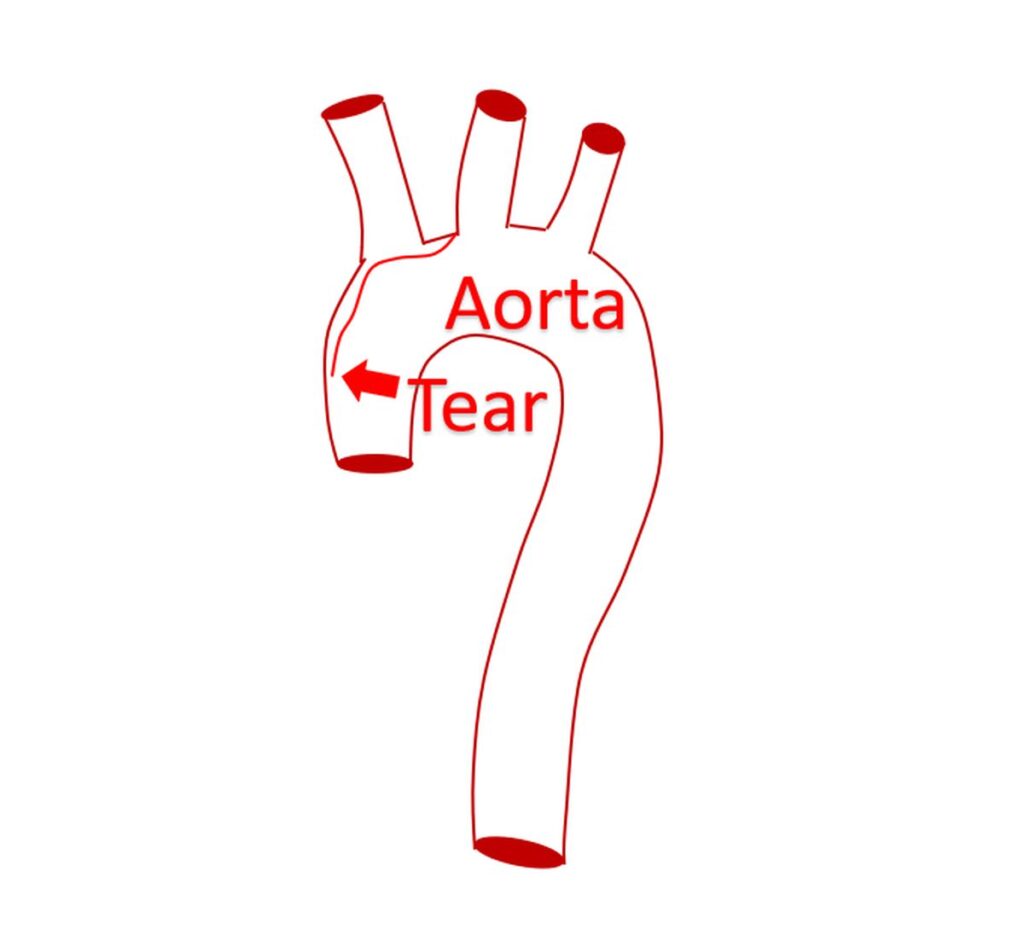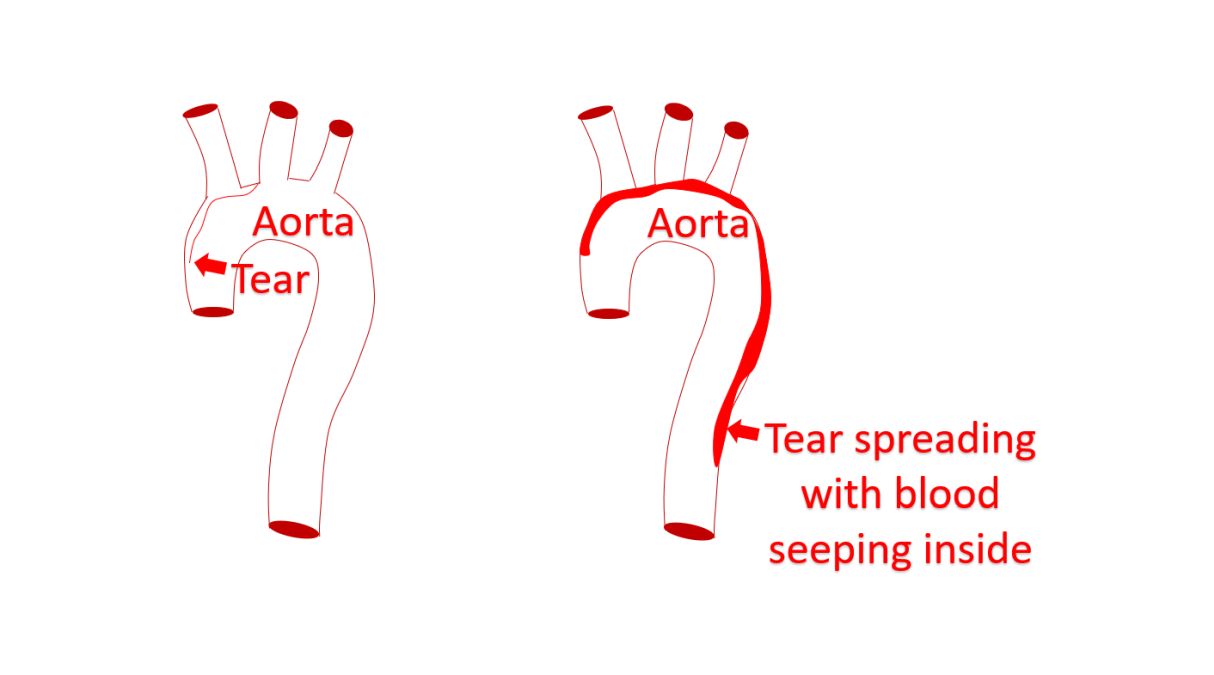What is dissection of aorta?
What is dissection of aorta?
Dissection of aorta is a tear in the inner lining of aorta. Aorta is the largest blood vessel in the body carrying oxygenated blood pumped by the left ventricle. Left ventricle is the lower muscular chamber of the heart on the left side. Blood in the lumen of the aorta enters the break in the vessel wall and spreads along the vessel wall.

When an aortic dissection spreads along its wall, the openings of the side branches can be blocked. The spread is enhanced by high blood pressure and a forceful contraction of the left ventricle. An aortic dissection can occur anywhere along the length of the vessel, right from its origin to its bifurcation in the lower part of the tummy.

Dissection of aorta can also extend into the side branches like the blood vessels to the legs. When the blood vessels arising from the arch of the aorta are affected, blood supply to the brain is compromised and can produce a stroke or loss of consciousness. Dissection at the origin of the aorta can obstruct the blood vessels to the heart itself and cause a heart attack as well. Similarly, blood supply to the intestines may also be cut off.
Symptoms of aortic dissection will depend on the location. Aortic dissection occurring near its origin produces a severe tearing chest pain. The intensity of pain is maximum in the beginning. Pain can also occur in the back of the chest if the location of the tear in the vessel wall is a bit beyond its origin. Pain in the tummy can occur if the dissection is lower down. Other symptoms can occur due to obstruction of branch blood vessels as the dissection progresses.
Dissection of aorta is usually a very serious life threatening disease which needs emergency treatment. The wall of the aorta which is weakened by the break in the inner lining can also rupture, especially if the blood pressure is high. So it is an urgent need to control the blood pressure with medications, usually given as a drip. The force of contraction of the left ventricle is also brought down to reduce its ejectile force which has an important role in propagation of the tear along the aortic wall.
Nature of the pain and associated blockage of other blood vessels differentiates aortic dissection from a heart attack. Occasionally both may co-exist. Pulse asymmetry between the limbs is a classical finding in aortic dissection as some of the limb vessels may be blocked by the dissection flap. But this finding need not be present if the origin of the branches have not been involved.
Though an X-ray of the chest may give an indication of aortic dissection, the investigation of choice is computed tomographic (CT) scan after injecting contrast medication. CT scan will show the extend of the aortic dissection, origin of the dissection tear and involvement of branch vessel. Three dimensional reconstruction by computer processing will give excellent images which can be comprehended even by an untrained person. These images are very useful in planning treatment and follow up.
After stabilizing the person with urgent medical treatment, either surgery or implantation of a stent graft is urgently needed. Aortic dissection near its origin is more dangerous as it can involve blood vessels to the heart and brain. It is usually treated by urgent surgery, though not without risks as it involves blood vessels to vital organs.
Stent graft is a spring like material with a fabric cover, attached to a tube which can be introduced through blood vessels in the groin. Stent graft procedure is done under X-ray imaging control to observe the movement of the device within the blood vessel. The fabric covered stent seals off the opening in the vessel wall and prevents further progression and stabilizes the vessel wall.


